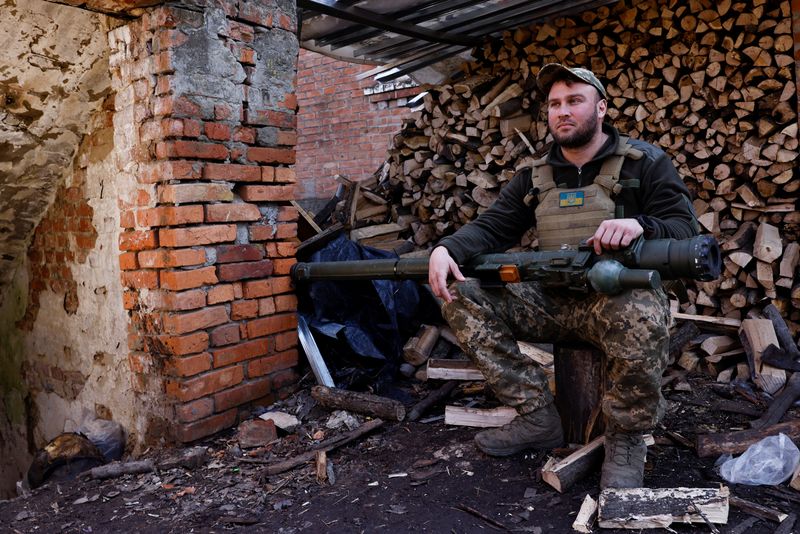By Mike Collett-White
WEST OF SOLEDAR, Ukraine (Reuters) - Russian forces are increasingly using drones in aerial battles over the fiercely contested city of Bakhmut, but the threat of fighter jets and helicopters remains and more Western weapons are needed to counter them, Ukrainian soldiers said.
In a small hamlet west of Soledar, a town to the north of Bakhmut now under Russian control, troops from an anti-aircraft unit in Ukraine's 10th Mountain Assault Brigade were planning to use drones to attack Russian positions.
"Recently we have noticed a lot of activity of enemy intelligence drones," a member of the unit who goes by his call sign "Kamin", meaning "Stone", told Reuters on Thursday. He declined to give his real name.
"The work of (regular) aviation has decreased. I cannot say that it has disappeared altogether, but it has decreased. Maybe it is due to the fact that we are working well."
Kamin, 42, showed Reuters some of the shoulder-held weapons the unit has used to reduce the threat of plane and helicopter attacks on frontline Ukrainian positions.
"The main task for us is not necessarily to hit the plane but to let the pilot know that we are here," he said in a cramped control room inside a small bungalow.
"If we launch something at them then they are afraid, and there is a big difference between them firing a missile from a plane from one to two kilometres and six to seven kilometres."
Earlier this month, "Chub", who serves in the same unit, said he had downed a Russian SU-25 jet using a Polish shoulder-held Piorun air defence system on March 9 in the Bakhmut area. Reuters could not independently verify his account.
"The plane flew into our area of responsibility ... and the plane was destroyed," said the 34-year-old, who is from the occupied southern Ukrainian city of Mariupol.
"It doesn't often happen that they fly into our kill zone ... This is very hard work and it takes a lot of time," he added. "We are like hunters waiting for prey. We sit for a long time, sometimes for months. But in some rare moments it happens."
'WE NEED STINGERS'
According to Kamin, the unit did not have enough anti-drone guns to help protect them from a growing threat, while the Russians appeared to have many more. He picked up an American sniper rifle, which he said could be effective against unmanned aerial vehicles (UAVs).
The unit recently acquired a Ukraine-made drone packed away in a case ready to be deployed in the battlefield. It was capable of carrying up to eight grenades.
Drones are an increasingly important part of Ukraine's military plans with the full-scale war well into a second year. While Russia has far greater resources - both in terms of soldiers and equipment - Kyiv believes drone innovation is one area where it can begin to catch up with Moscow.
"Now it is a war of drones," Kamin said. "The Russians used reconnaissance drones, but now they are also using more drones that are carrying weapons."
Despite the growing focus on UAVs, Kamin urged Western allies to supply more anti-aircraft weapons, including U.S. Stingers, which he said he was running out of.
Particularly effective were those with thermal vision, he explained, because they help Ukrainian forces spot enemy aircraft that are almost invisible to the naked eye unless they are close.
"I want more Stingers," he said.

The United States, Europe and other allies have sent tens of billions of dollars' worth of military equipment to Ukraine to help it hold invading Russian forces at bay.
While that has largely worked so far, some Ukrainian officers and officials say that their stocks of weapons and ammunition, including artillery shells, are running low.